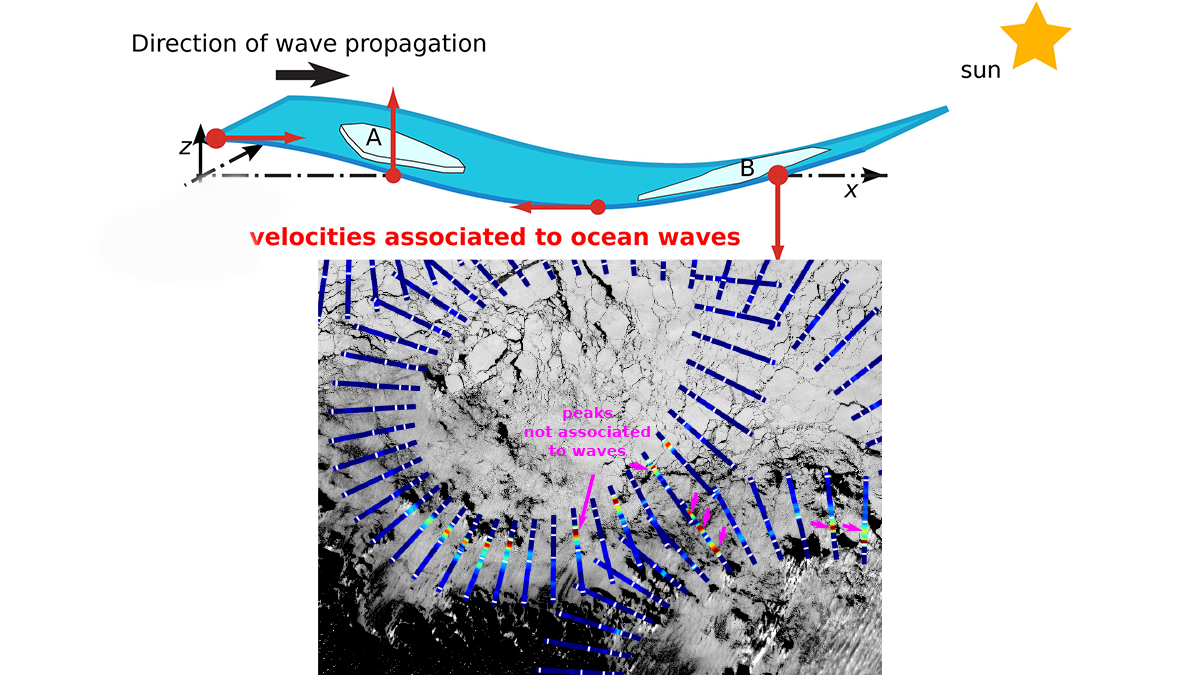Editors’ Highlights are summaries of recent papers by AGU’s journal editors.
Source: Journal of Geophysical Research: Oceans
Waves generated by winds are an important feature of the ocean surface as they impact air-sea gas exchange, upper ocean mixing, marine life, and marine operations. In cold regions, these waves also interact with sea ice, and little is known about how waves affect ice drift and breakup. With less sea ice cover and higher waves associated with climate change predicted for the future, it is critical to improve measurement and understanding of how waves interact with ice.
Collard et al. [2022] analyze satellite observations of wave patterns as waves travel through sea ice in the Arctic Ocean. A new method for considering observations from five different types of satellites including data from three radar and two optical sensors is presented. Expanding on methods developed in previous studies, the authors analyze the wave heights, wave directions and wavelengths and the size of ice floes and leads as waves propagate through and interact with sea ice near the ice edge. The results of the five data sources taken together provide precise measurements of wave properties and help understand ocean surface conditions in places that are otherwise very difficult to measure.
Citation: Collard, F., Marié, L., Nouguier, F., Kleinherenbrink, M., Ehlers, F., & Ardhuin, F. (2022). Wind-wave attenuation in Arctic sea ice: A discussion of remote sensing capabilities. Journal of Geophysical Research: Oceans, 127, e2022JC018654. https://doi.org/10.1029/2022JC018654
—Ryan P. Mulligan, Editor, Journal of Geophysical Research: Oceans

